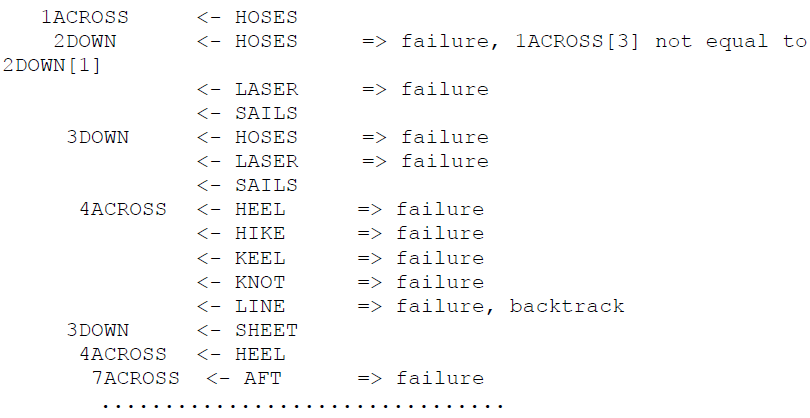SKEDSOFT
Backtracking: We order the variables in some fashion, trying to place first the variables that are more highly constrained or with smaller ranges. This order has a great impact on the efficiency of solution algorithms and is examined elsewhere. We start assigning values to variables. We check constraint satisfaction at the earliest possible time and extend an assignment if the constraints involving the currently bound variables are satisfied.
Example 2 Revisited: In our crossword puzzle we may order the variables as follows: 1ACROSS, 2DOWN, 3DOWN, 4ACROSS, 7ACROSS, 5DOWN, 8ACROSS, 6DOWN. Then we start the assignments:

What we have shown is called Chronological Backtracking, whereby variables are unbound in the inverse order to the the order used when they were bound. Dependency Directed Backtracking instead recognizes the cause of failure and backtracks to one of the causes of failure and skips over the intermediate variables that did not cause the failure.
The following is an easy way to do dependency directed backtracking. We keep track at each variable of the variables that precede it in the backtracking order and to which it is connected directly in the constraint graph. Then, when instantiation fails at a variable, backtracking goes in order to these variables skipping over all other intermediate variables.
Notice then that we will backtrack at a variable up to as many times as there are preceding neighbors. [This number is called the width of the variable.] The time complexity of the backtracking algorithm grows when it has to backtrack often. Consequently there is a real gain when the variables are ordered so as to minimize their largest width.